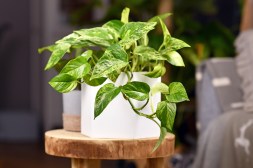Understanding Light Requirements for Houseplants: A Detailed Care Guide
Houseplants can be a delightful addition to any home, bringing color, life, and fresh air into your living space. However, one of the most critical aspects of houseplant care is understanding their light requirements. Each type of plant has its own unique needs when it comes to sunlight exposure. In this guide, we will explore various light conditions and how they affect houseplant health.
Types of Light Conditions
Houseplants generally thrive in three main types of lighting conditions: low light, medium light, and bright light. Low-light plants such as snake plants and pothos can survive in dimly lit areas but may not grow as vigorously. Medium-light plants like peace lilies prefer indirect sunlight for a few hours each day. Bright-light plants such as succulents and cacti need several hours of direct sunlight daily to flourish.

Understanding Natural Light Sources
When considering where to place your houseplants, it’s essential to identify the natural light sources in your home. North-facing windows typically provide low light; south-facing windows offer bright direct sunlight; east-facing windows receive morning sun—a softer type—and west-facing ones provide strong afternoon sun that is ideal for many plants.
Assessing Your Plant’s Needs
To ensure optimal growth for your houseplants, it’s crucial to assess their specific light requirements. Check the labels or care guides that often come with plants at purchase; they often indicate whether a plant prefers low, medium or bright light conditions. Additionally, observing how your plant reacts over time—like leaning toward a window—can help you gauge if they are receiving enough sunlight.
Adjusting Light Exposure
If you notice your plant struggling with inadequate lighting—like dropping leaves or stunted growth—consider relocating it closer to a light source or using supplemental grow lights designed specifically for indoor gardening. Rotating your plant periodically also ensures all sides receive even exposure and promotes balanced growth.
Seasonal Changes in Lighting
It’s important to remember that natural lighting changes with the seasons due to varying daylight hours and angles of sunlight throughout the year. During winter months when daylight is reduced, you might need to adjust where you’ve placed your plants or consider investing in artificial grow lights to maintain their health during less sunny periods.
In conclusion, understanding the different lighting requirements for various houseplants is essential for successful indoor gardening. By assessing natural light sources available in your home and adjusting placements according to seasonal changes, you can create an optimal environment for your green friends. Happy planting.
This text was generated using a large language model, and select text has been reviewed and moderated for purposes such as readability.


